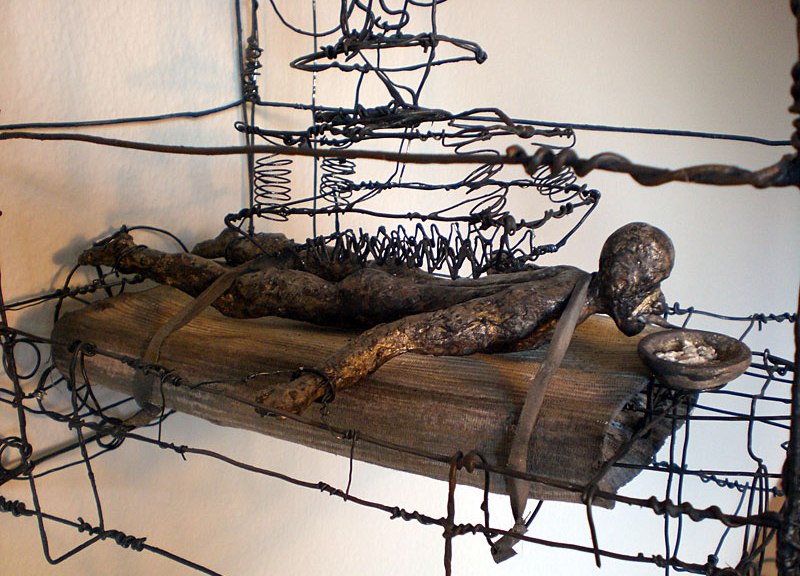A good friend of mine over at Carleton, Stuart Murray, was showing me a mock-up of a “fact sheet” that the university was putting together on his work. Clearly the design folks over there were at a loss as to what image to use for the big splash page, since they had copped a lo-res picture of some statue of Plato (or Socrates) from iStockphoto, blew it up, and slapped it in, watermark and all. He’s at a bit of a loss, since his work crosses a number of fields and topics: “What says “biopolitics” and death and ethics and medicine and prison and . . . ?” Remembering that he taught Kafka’s “In the Penal Colony” one year at Ryerson, in a rhetoric course on “Free Speech,” I did a quick troll on Google and found this great work by a German artist named Martin Senn, an illustrator and painter who also does fantastic work with wire sculpture.


In any event, I find Senn’s representation of the device from Kafka’s tale remarkably evocative of the absurdly inhuman inscription of the Law upon the human subject. Bits and pieces of found materials twist together in a largely empty form to bring incredible violence upon the body of the condemned. And we are, all of us, in Kafka’s world, condemned.
Just ask Gregor Samsa!


